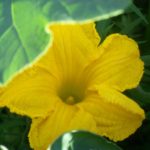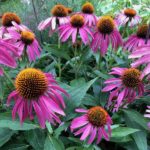
Seed Gathering Time
By day it is still super-hot in Denver, but the nights are cooler and the days are shorter. This triggers plants, especially annuals (those that live only one season) to begin to set seeds. When we are enjoying the beauty of flowers or the harvest of fruits and vegetables, we may get confused and think that it is all about us. It’s actually all about the seeds. Although plants may partner with humans, their ultimate quest is making seeds to create their next generation.
And even though many plants are adept at self seeding (dropping their seeds that will sprout next season) we can help them along and honor that process by collecting and saving seeds to plant and share.
Seeds are little packages of connection. They are a bridge between our future gardens and our gardens that will soon be going to rest. And they are a connecting point with the pollinators, bees and others, that make our food possible. They connect us to other gardeners when we gift the seeds we’ve collected or are on the receiving side. This season I have blue tomatoes from seeds my daughter collected and angel’s trumpets, a seed-gift from my sister.
Start with the Easy Ones
Flower and beans are some of the easiest seeds to collect. You simply wait until they are dry to collect them. This week I’ve been gathering seeds of calendula, cosmos, and rattlesnake pole beans. I plant calendula every year for salve and soap making. The rattlesnake pole beans are solid producers of fresh and dried beans. And I grow cosmos for their beauty and resilience to the weird growing conditions we have in Colorado. They also attract droves of pollinators.
I won’t need to buy any of these varieties next season. So certainly, there is a frugal reason to collect seeds. But there’s more. When we save seeds each year from our own gardens, the plants begin to adapt. We end up with stronger plants more attuned to our ecosystem.
Frugality plus Helping Save the Planet
If frugality plus stronger plants does not tempt you to collect seeds, consider this. According to the Seed Savers Exchange, we have lost 75% of edible varieties of plants in the last 100 years. Loss of diversity is a concern because we have lost resilient genes and plants that could withstand emerging diseases and environmental changes.
The Seed Savers Exchange is a non-profit whose mission is to “conserve and promote America’s culturally diverse but endangered garden and food crop heritage for future generations by collecting, growing, and sharing heirloom seeds and plants.” Check out their website for lots of information on how to collect and share your own seeds and to support their work.

Whether you plan to save seeds this year or not, take some time to notice seeds forming on plants. This process of plants creating new plants is something that makes life on the planet possible. Seeds are symbols of life and hope. When holding a seed in your hand you are touching the strength of the ancestors of this plant and a passport to the future. That is pretty magical.


